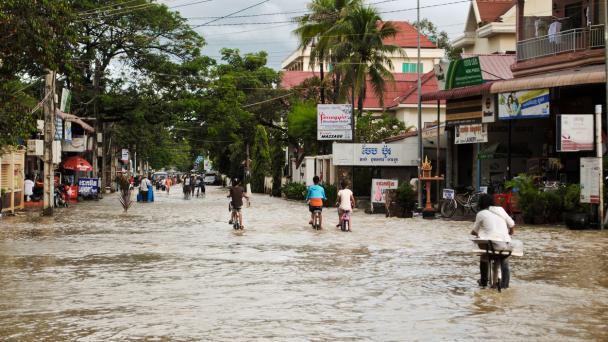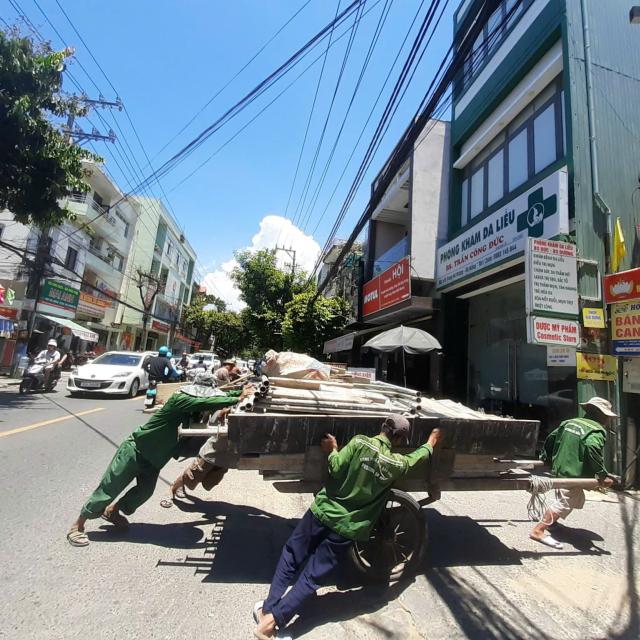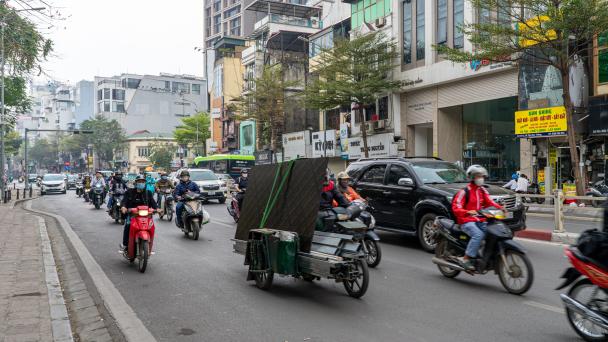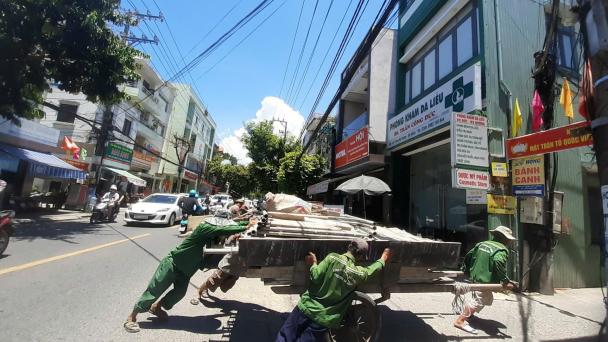The Health Impacts of Extreme Weather on Vulnerable Groups in the Urban Global South


Climate change remains a ‘profound existential threat’ for Asia. In urban environments, informal outdoor workers – for example, street vendors, motorbike taxi riders, porters, and construction workers – face heatwaves, worsening air pollution, and other climate-related extreme weather that put their health and livelihoods at risk. As part of our Wellcome Trust-funded project, we have published a systematic evidence review filtering 734 papers about climate-related health risks faced by informal outdoor workers in Asia, and analysed 18 of the most relevant in detail. The findings are instructive: there are significant knowledge and policy gaps in both our understanding and protection of workers from climate-related health risks. So, what can be done? Here are five key policy actions governments can take to close this gap and safeguard the people who help keep their cities running.
Working in intense heat is more than uncomfortable—it’s dangerous. Heat can cause exhaustion, cramps, heatstroke, and even long-term mental health issues. Yet many countries in Asia lack enforceable standards for when outdoor work should stop. International standards exist, prominently ISO 7243:2017 and the ACGIH’s 1 Threshold Limit Values (TLV) for heat stress exposure. But they are not strictly observed, let alone enforced, especially in countries where outdoor labour is prevalent and often informal. In India, for example, construction workers regularly face temperatures well above safe limits.
Knowing when it’s too hot to work is critical. Early warning systems can be developed to estimate heat levels using forecasts of air temperature, humidity, radiant heat, and wind movements. When thresholds are crossed, alerts can trigger actions before a crisis hits. Heat action plans should outline clear steps.
A wide range of actions can be recommended:
Notwithstanding such supporting mechanisms, extreme heat can still lead to health issues like headaches, fainting, blurred vision, muscle spasms, and abdominal cramps. Treatment is only possible if workers report their symptoms to health authorities. But reporting is not a straightforward matter for informal workers in precarious employment, who may fear job loss or financial penalties from their employers. Instead, workers may rationalise these symptoms as just an inevitable part of hard work and claim that they are ‘used to heat.’ To encourage reporting, governments can establish confidential channels for workers to reach health authorities, mandate employers to provide paid sick leave and job security guarantees, as well as raise public awareness of the severity of heat-related health issues via mass or social media and educational campaigns in the local communities, targeted at workers who are typically less educated and digitally advanced. Recognition and public awareness of the scale and nature of the problem is a necessary first step.
Heat isn’t the only hazard. Outdoor workers are also exposed to air pollution from traffic and industry. Pollutants like PM2.5, sulphur dioxide, and nitrogen dioxide can aggravate respiratory diseases and cardiovascular conditions. To reduce the concentration of pollutants in the air, governments can promote green technologies based on public health risk assessments informed by more and better air monitoring stations. For example, to reduce pollution caused by the traffic, older vehicles powered by diesel can be phased out, public transportation improved and expanded, and cycling and walking encouraged through infrastructure like cycling lanes and footpaths segregated from motorways.
Not all workers face the same risks. People with pre-existing conditions, the elderly, pregnant women, and those in dense urban areas or physically demanding jobs are especially vulnerable. Policies should be tailored to these groups. Any heat exposure standards, heat action plans, educational campaigns, and other policies should attend to their heightened vulnerabilities and particular needs. For example, to address the health risks facing urban dwellers, governments should develop city- or district-level heat exposure standards to account for the varying resilience of different neighbourhoods, adopt Climate Smart Urban Planning to integrate high tech solutions, and install amenities like green spaces, shaded areas, and street sprinklers. These measures are attuned to the urban setting, aiming to mitigate the heat island effect and strengthen the heat adaptive capacity of cities.
Climate-related health risks are growing due to rising temperatures, expanding cities, and ageing populations. But the path forward is well-lit. To protect workers, governments should develop heat exposure standards, early warning systems, and heat action plans; facilitate the reporting of health symptoms; reduce air pollution; and prioritise those most vulnerable. Through our research project, we are seeking to translate these evidence-based policy recommendations into policy changes on-the-ground so that informal outdoor workers at the forefront of climate change do not have to choose between their livelihoods and their health.




